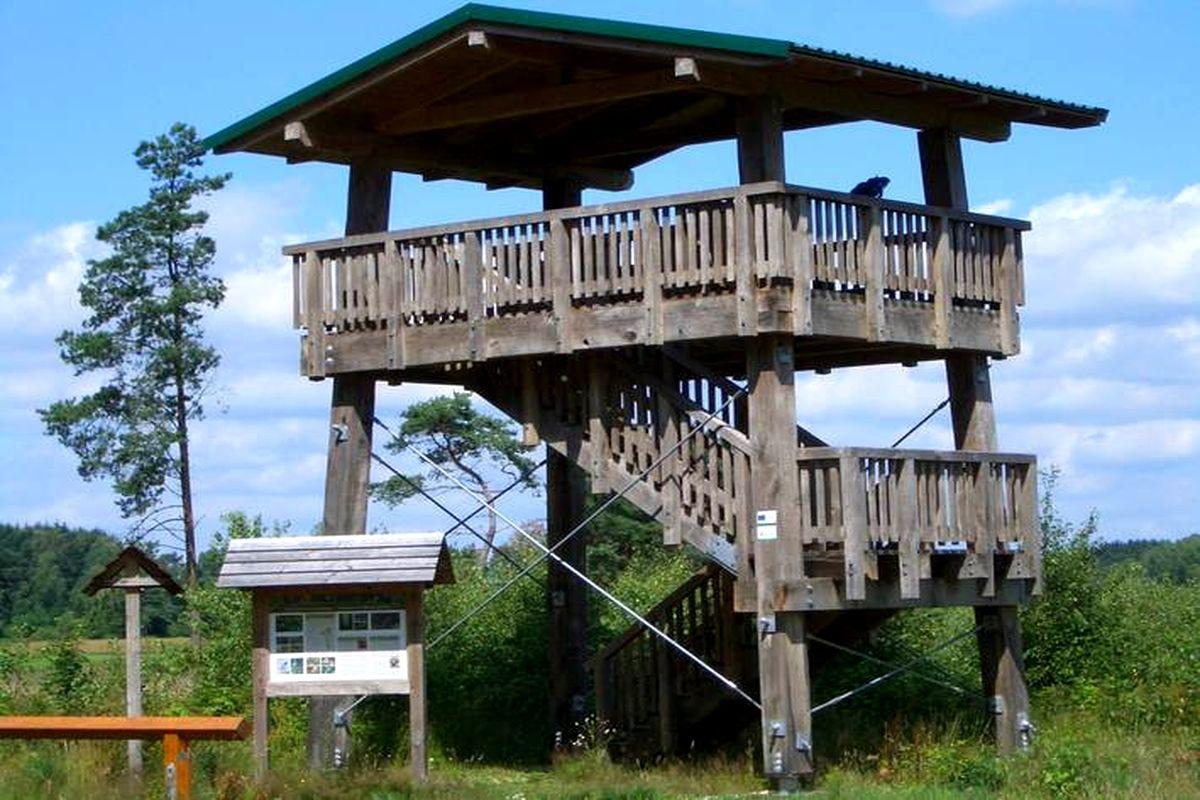



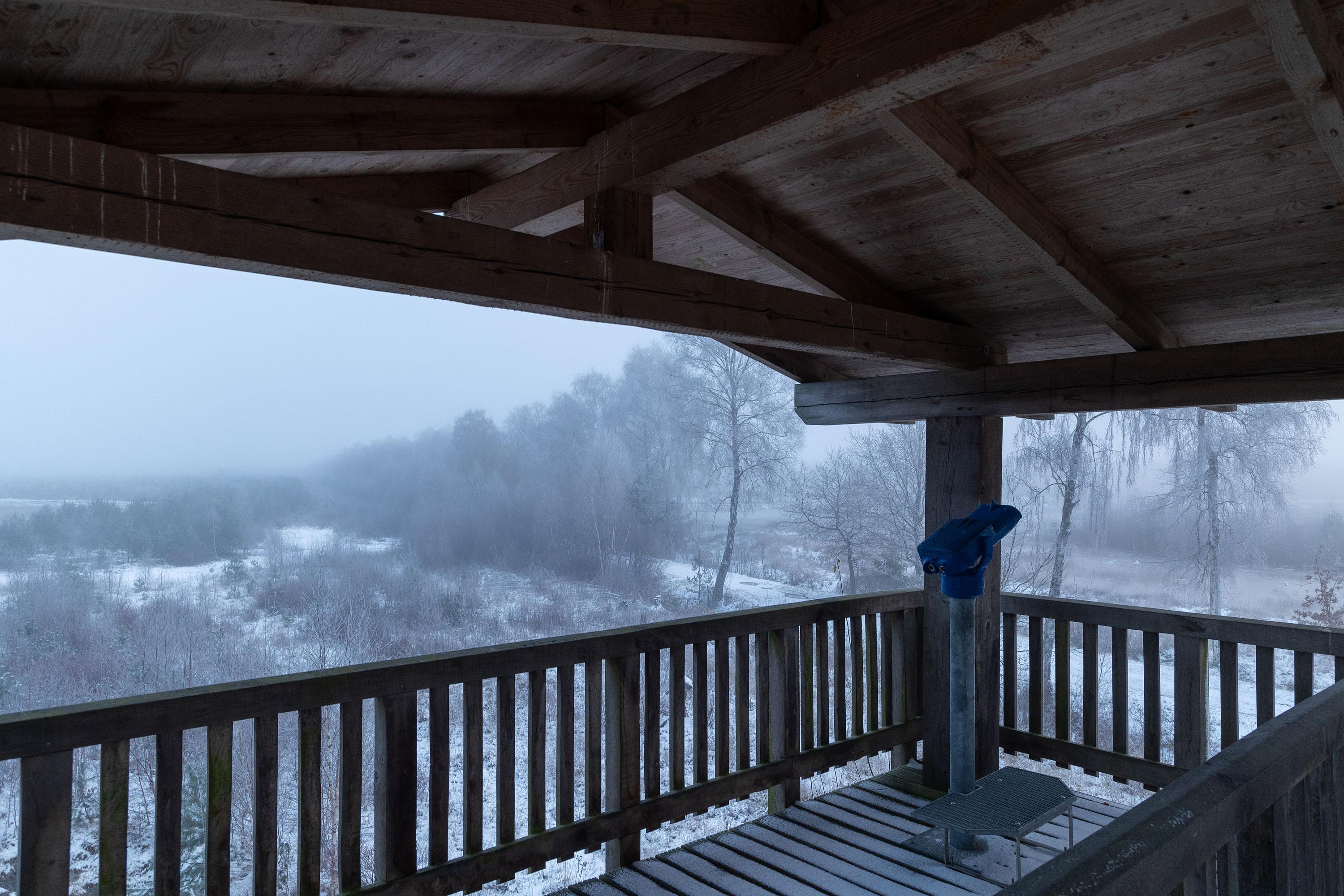


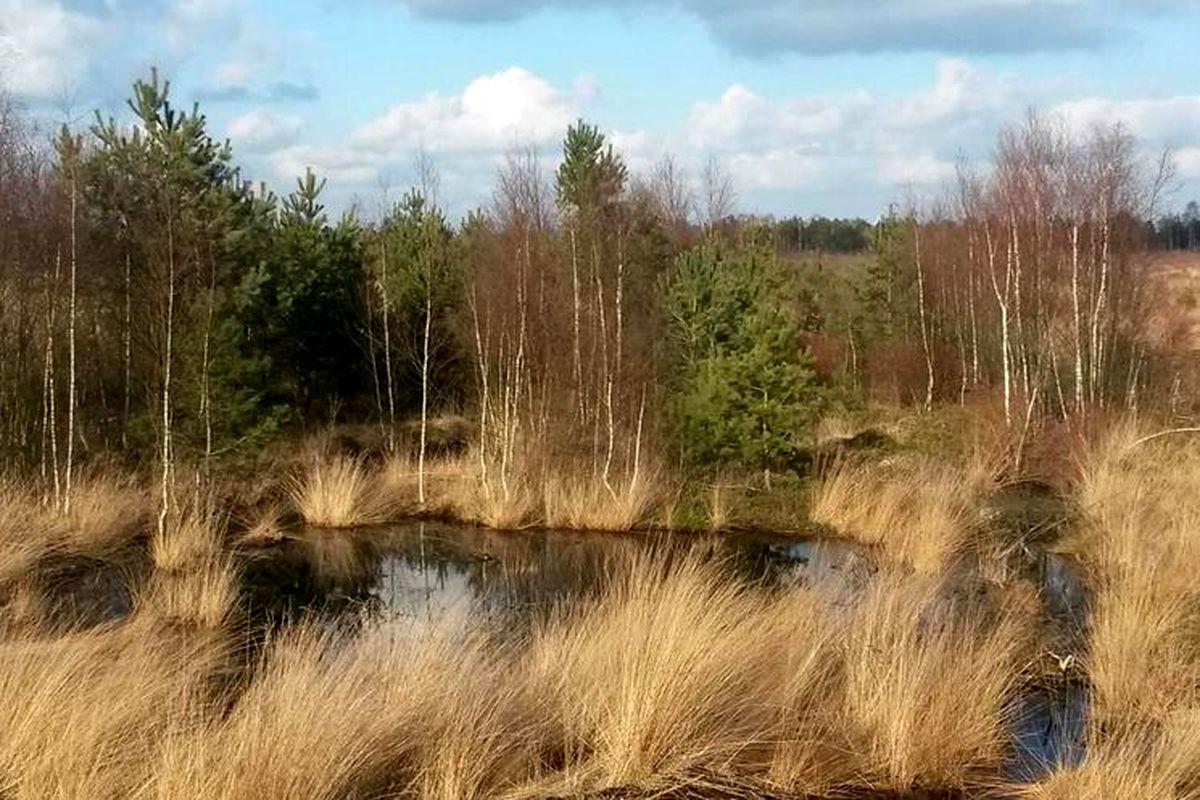

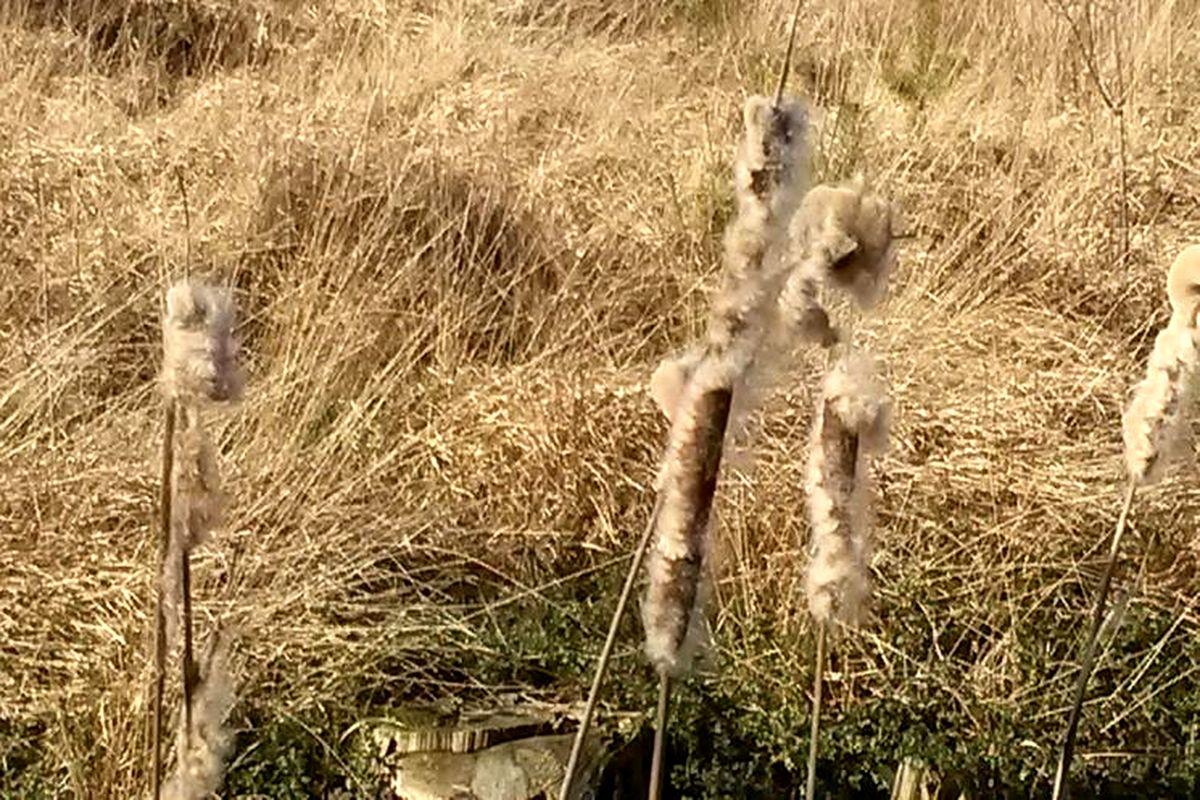

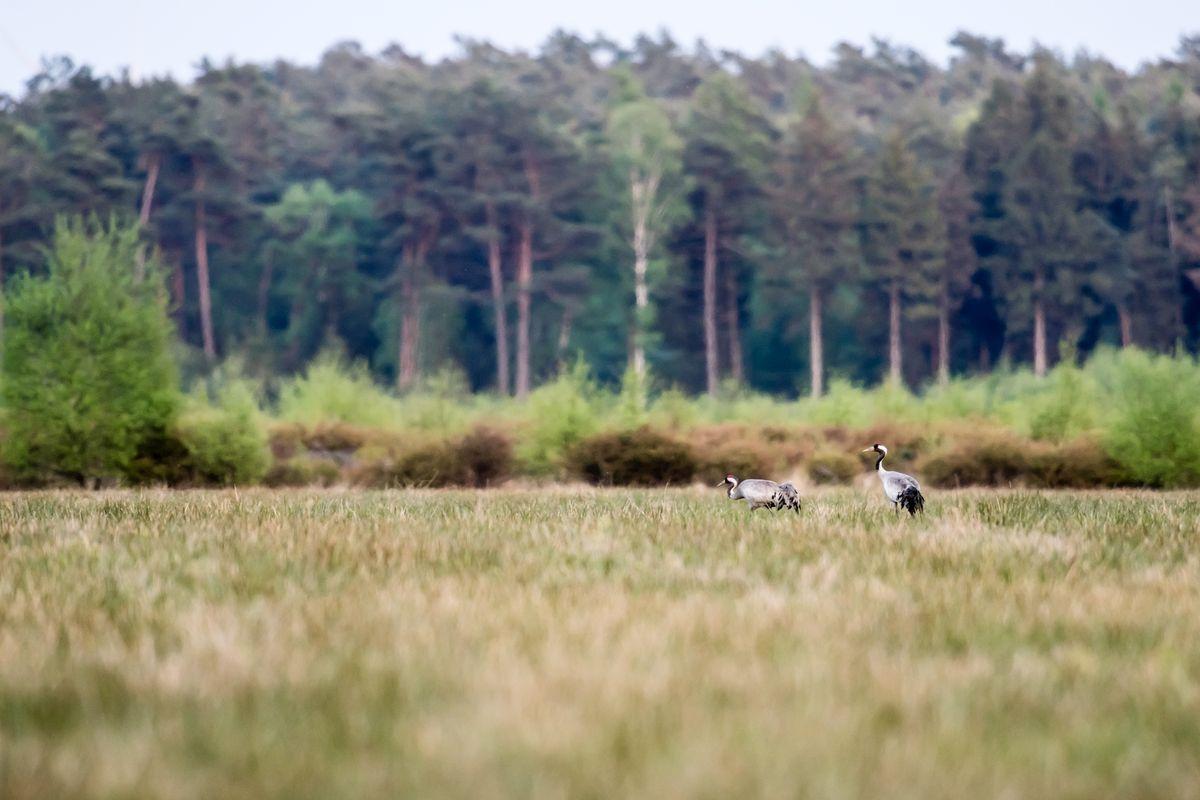
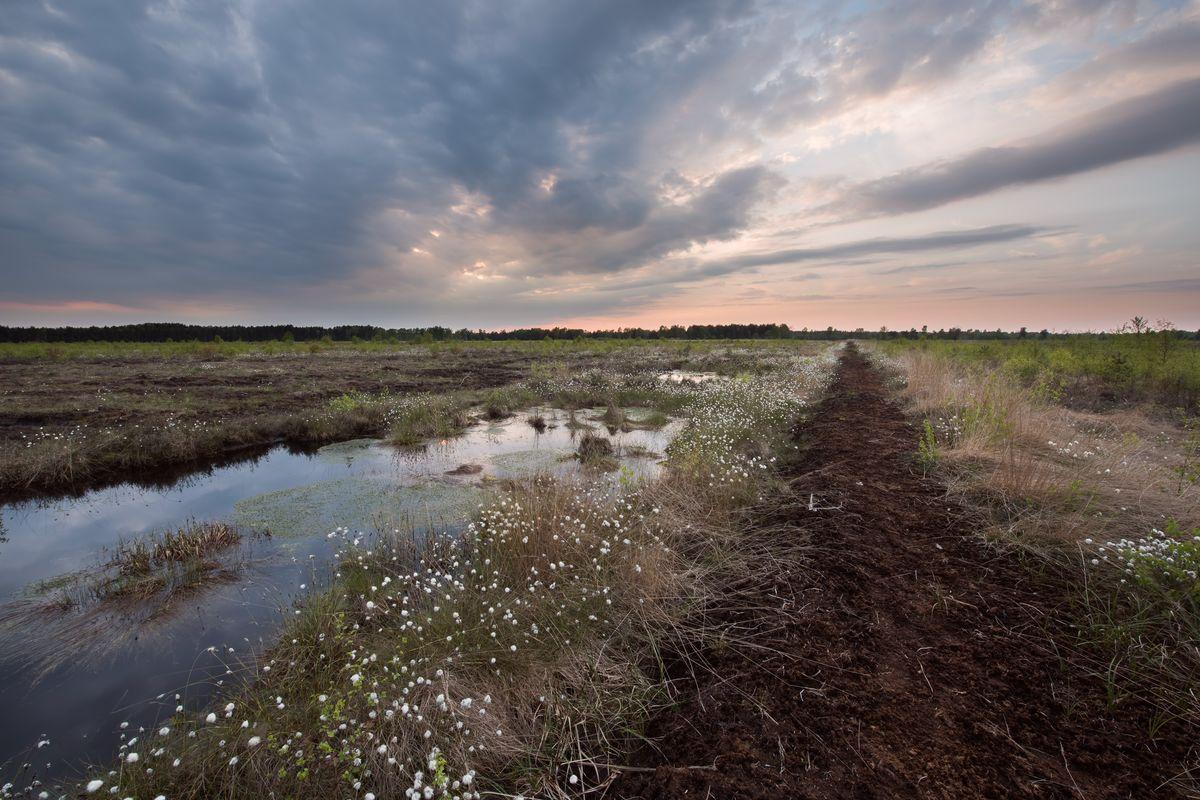
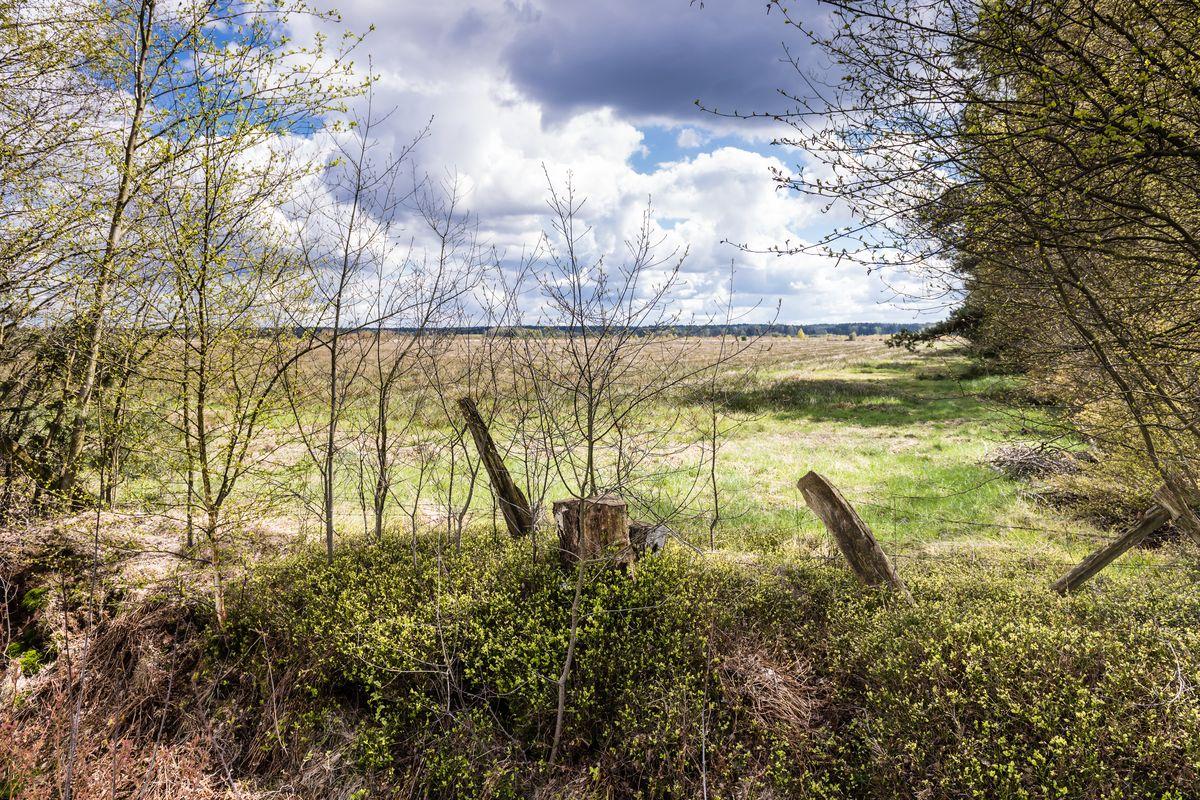
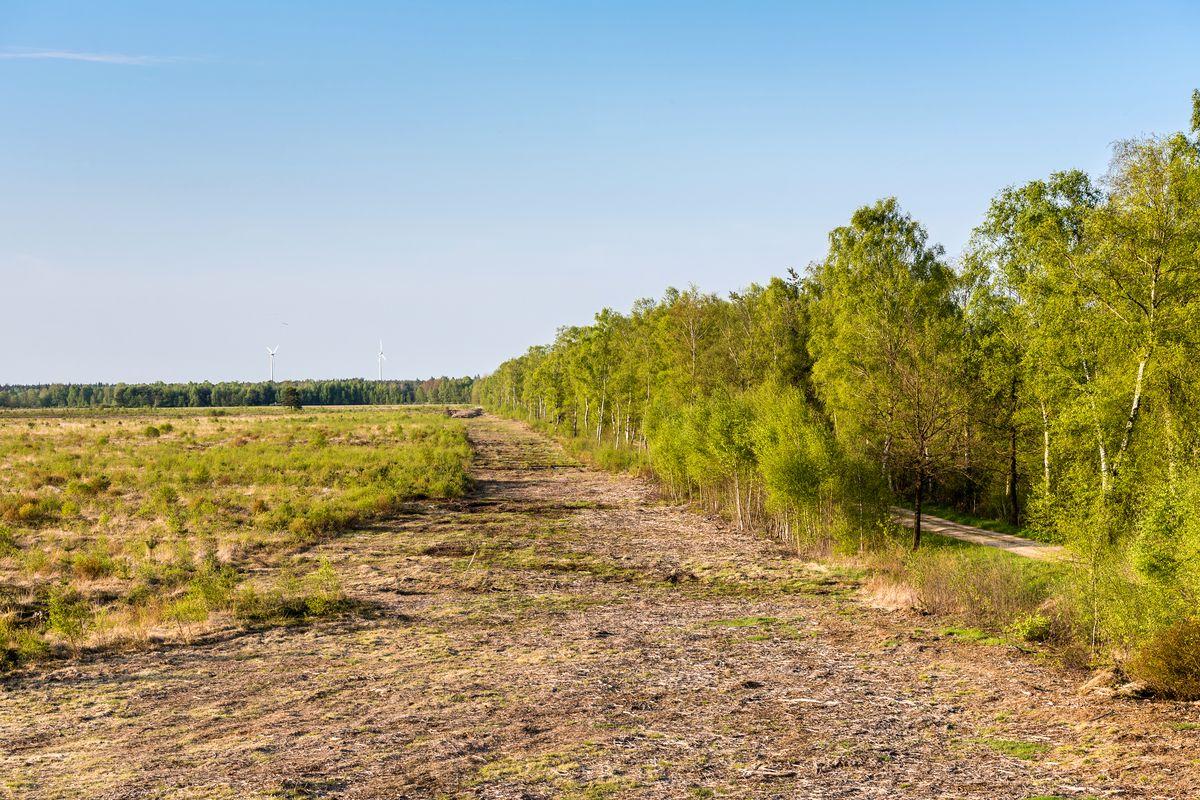

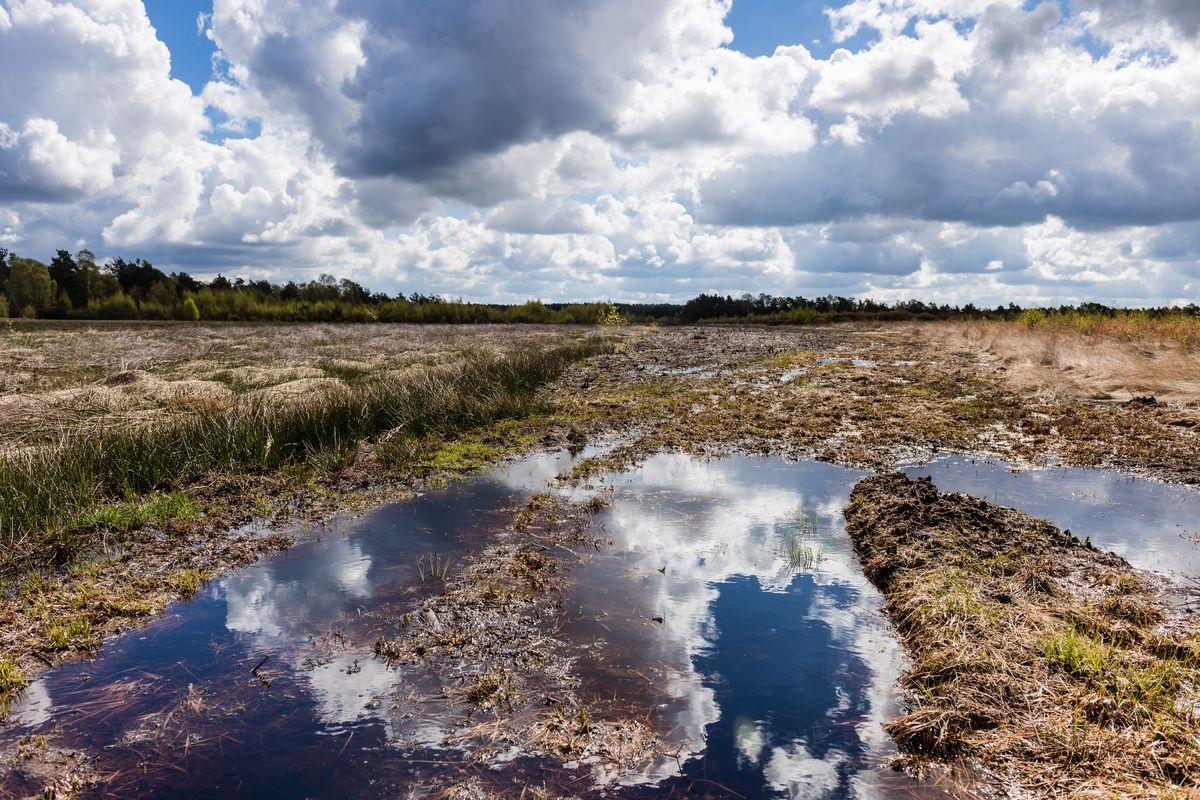

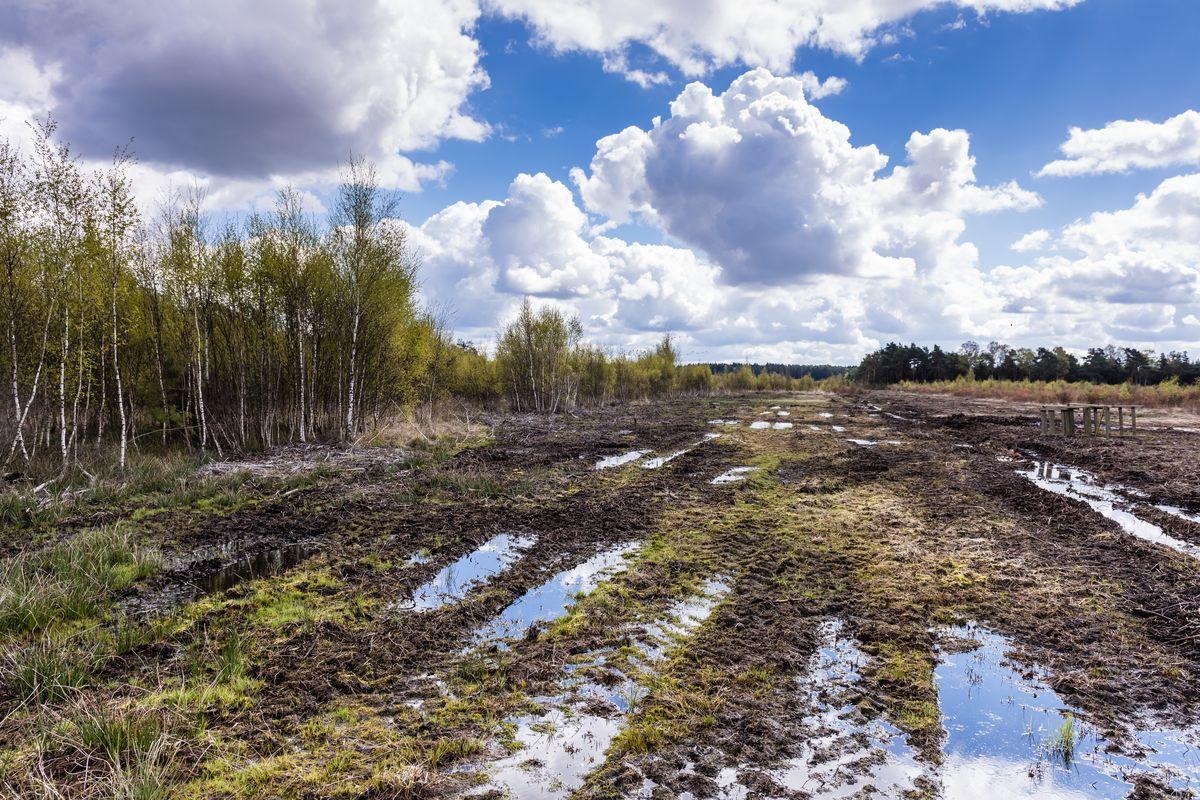
The Lower Saxony water management, coastal and nature protection agency began to take measures to restore the moor to its natural state in 2006.
Today, flora and fauna that have become rare can be observed here.
The 8.44 m tall Heinrich Eggers observation tower offers amazing views of the flat surrounding area.
It provides excellent views of wet moorlands, bordering meadows and pastures, as well as small woodlands. With a little bit of patience and luck you can spot different animal species. Looking out into the surrounding peaceful landscape feels like playing a huge game of hide and seek.
Observing nature on Becklingen Moor
The fixed binoculars are extremely useful for observing nature. Especially when the dark “twigs” sticking out of the grass turn out to be deer ears or if you want to have a closer look in the direction where the sudden, loud call of a crane came from… With a little practise you can make some magnificent nature observations while enjoying the peace and quiet of this very special moor landscape.
History of Becklingen Moorland
The foundation of this impressive moorland was laid about 125,000 years ago at the end of the Saale Glaciation. Water masses flowing off the glacier left a 15 km long channel with dense material on the ground, causing water to collect. Acidic, oxygen-deficient conditions helped the growth of sphagnum moss, growing slowly into a moor.
From low to high moorland
The moor started out as so-called low moorland where plants were still in connection with the groundwater. However, during the course of thousands of years, dead plants raised the moor’s foundation ever higher and the plants lost their connection to the groundwater. This is how the low moorland was transformed into a high moorland. High moorlands are only fed by rain and are very important water reservoirs for the surrounding areas. Only specially adapted plants manage to survive in high moorlands due to the extreme lack of nutrients.
Drainage of the moorlands
Until the end of the 18th century, Becklingen moor remained practically untouched until exploitation began, initially in the form of rural peat-digging. It was followed in 1964 onwards by an extensive drainage of the moorland through a dense drainage system. The moor was cultivated for agricultural use and the original biosphere and character of the landscape were lost.
Remaining moorlands become protected areas.
In 1985, the south section of the moor with its few remaining moorlands was declared a nature reserve area. However, it continued to dry out due to dewatering. Typical moorland plants such as cotton grass, sundew, sphagnum mosses and many others were replaced by birch and pine trees. Also, some characteristic animal species like the black grouse disappeared. What had taken thousands of years to grow disappeared within a few decades.
Renaturation
Renaturation measures in Becklingen Moor began in 2006. The moorlands were slowly given back their water in order to readjust the water balance in the long term. Drainage ditches are still being backfilled to enable the water level in the moor’s foundation to rise again, and non-indigenous trees on the moorland areas are cut down.
High moorlands such as Becklingen Moor consist mainly of sphagnum mosses that store water like a sponge. Thus, the protection of the moorlands is also flood prevention since large quantities of precipitation are stored short-term and only gradually dispensed into the nearby streams. Moorlands help to prevent floods.
The renaturation of moorlands like Becklingen Moor is also very effective climate protection since natural moorlands store large amounts of carbon.
Protection of moorland and species
It goes without saying that the protection of the moorlands is also significant for the protection of species, given that many rare and endangered species are found in natural moorlands: the common sundew, for example, grows in wet ditches. It is a very small, carnivorous plant which, in this nutrient-poor habitat, improves its nutrition supply by catching insects. Small insects stick to small and sticky glandular hairs and are decomposed by the plant. Bell heather, moor rosemary and the tiny cranberry can also be found in the moorlands.
Among the most noticeable moorland inhabitants are some very special bird species like Western curlews, lapwings, snipes and cranes, whose loud calls can be heard from afar especially in spring. Nightjars, great grey shrikes, red-backed shrikes as well as stonechats and whinchats belong to the special treasures of these moorlands, all in need of the tranquillity and seclusion of this landscape. Vipers, different dragonflies and butterflies have also returned to their natural habitat in the moorlands.
By the way – we can all contribute to the protection of moorlands in our own gardens by forgoing peat and using soil composed of compost with bark mulch or wood fibres. This is a great alternative and even more advantageous for garden plants. Peat-free soil bears the RAL seal of approval. After all, peat-digging continues to destroy many precious and magnificent moorlands.
Special tip: take a trip to Becklingen Moor between the end of April and the Middle of June and enjoy nature’s impressive spectacle of the cotton grass flower.

